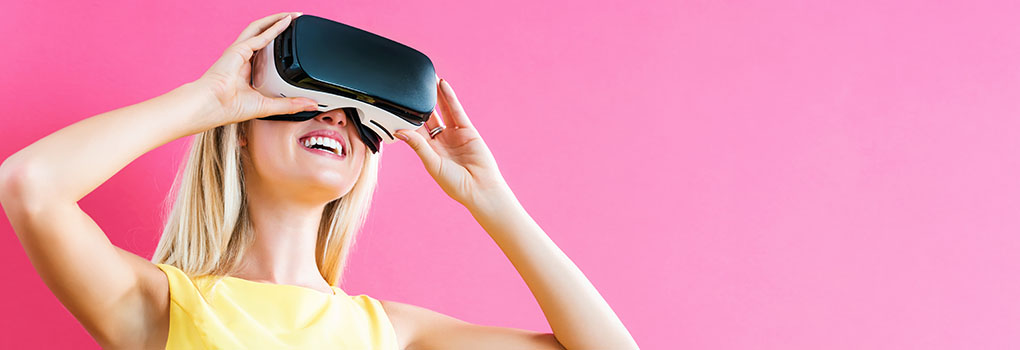What is Virtual Reality (VR)? VR Definition with Videos
June 21, 2023 - Dom Barnard
What is virtual reality?
Virtual Reality (VR) is the term used to describe a three-dimensional, computer generated environment which can be explored and interacted with.
Special goggles, also called VR headsets, are placed over the eyes and fully immerse you in the virtual environment, creating a realistic experience in the simulation.
The environment can be interacted with using either hand controllers, gloves with sensors or the VR headset itself.
VR can teleport you anywhere, helping you learn about different places and ideas by experiencing them as if you were actually there.
Virtual reality usually has these 4 characteristics:
- Believable: You feel like you're in the virtual world through what you see and hear.
- Fully immersive: As you move your head around with the VR headset on, what you see changes as well, just as it would in real life.
- Computer-generated: VR worlds are usually created with complex 3D computer graphics that change in real time as we move.
- Interactive: You can interact with different objects in the scene, whether it’s pressing a button or opening a door.
Augmented reality (AR) is different from VR as it enhances your real world view with digital overlays, whereas VR is a fully immersive experience in which you can’t see the real world.
Understanding virtual reality
Software creates the virtual worlds that are seen and experienced by users who wear a VR headset. As you look around with the VR headset over your eyes, the virtual world moves as it would in the real world.
These simulated graphics, combined with sound from the VR headset, trick our brain into believing that we are actually in the virtual world. This illusion can be very powerful after spending just a few minutes in VR, and can lead to scenarios such as people walking into walls because they forgot they are in a virtual world.
History of VR
The first technical developments for virtual reality were in the 1830s. However in 1935, VR became more commonplace, appearing in Pygmalion's Spectacles - a science fiction story where the main character wears a pair of goggles which transports him to a fictional world.
Since then, there have been many improvements to VR technology, leading to the launch of the Oculus Rift in 2012, which kickstarted VR as we know it today.
- Learn more about the History of VR
Virtual reality use cases
There are currently many uses of VR across a wide range of industries. The simplest example is watching a 360 degree movie, which appears all around you as you watch it.
There are some great examples on YouTube of this, where you can explore remote caves, take a ride on a roller-coaster, explore Victoria Falls and much more. You can watch these videos from your computer, using your mouse to scroll around the 360 environment, or in a VR headset, where you can move your head and look around the 360 degree video.
A very common use case for VR is gaming. Currently you can play a wide range of games from table tennis, to mountain climbing, to zombie shooting. Games in VR have proven very popular as the immersion completely teleports the player to a different world.
More practical use cases for VR include training employees for presentations, learning how to operate a crane, drive a truck, deal with difficult customers and much more. Corporate training in VR is a very fast growing area, as it leads to better knowledge retention and improved real world performance compared to other types of training.
Sellers of real estate can use VR to give virtual walkthroughs for potential clients, which allows them to get a great feel for the place before booking an in-person viewing.
- Learn about key industries already using VR

